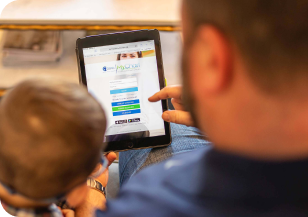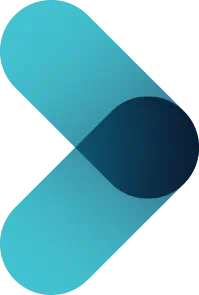GIVE NOW before 2025 ends—your gift will be doubled to help children in need. Click here to 2x your impact!

Ranked nationally in pediatric care.
Arkansas Children's provides right-sized care for your child. U.S. News & World Report has ranked Arkansas Children's in seven specialties for 2025-2026.

It's easier than ever to sign up for MyChart.
Sign up online to quickly and easily manage your child's medical information and connect with us whenever you need.

We're focused on improving child health through exceptional patient care, groundbreaking research, continuing education, and outreach and prevention.

When it comes to your child, every emergency is a big deal.
Our ERs are staffed 24/7 with doctors, nurses and staff who know kids best – all trained to deliver right-sized care for your child in a safe environment.

Arkansas Children's provides right-sized care for your child. U.S. News & World Report has ranked Arkansas Children's in seven specialties for 2025-2026.

Looking for resources for your family?
Find health tips, patient stories, and news you can use to champion children.

Support from the comfort of your home.
Our flu resources and education information help parents and families provide effective care at home.

Children are at the center of everything we do.
We are dedicated to caring for children, allowing us to uniquely shape the landscape of pediatric care in Arkansas.

Transforming discovery to care.
Our researchers are driven by their limitless curiosity to discover new and better ways to make these children better today and healthier tomorrow.

We're focused on improving child health through exceptional patient care, groundbreaking research, continuing education, and outreach and prevention.

Then we're looking for you! Work at a place where you can change lives...including your own.

When you give to Arkansas Children's, you help deliver on our promise of a better today and a healthier tomorrow for the children of Arkansas and beyond

Become a volunteer at Arkansas Children's.
The gift of time is one of the most precious gifts you can give. You can make a difference in the life of a sick child.

Join our Grassroots Organization
Support and participate in this advocacy effort on behalf of Arkansas’ youth and our organization.

Learn How We Transform Discovery to Care
Scientific discoveries lead us to new and better ways to care for children.

Learn How We Transform Discovery to Care
Scientific discoveries lead us to new and better ways to care for children.

Learn How We Transform Discovery to Care
Scientific discoveries lead us to new and better ways to care for children.

Learn How We Transform Discovery to Care
Scientific discoveries lead us to new and better ways to care for children.

Learn How We Transform Discovery to Care
Scientific discoveries lead us to new and better ways to care for children.

Learn How We Transform Discovery to Care
Scientific discoveries lead us to new and better ways to care for children.

When you give to Arkansas Children’s, you help deliver on our promise of a better today and a healthier tomorrow for the children of Arkansas and beyond.

Your volunteer efforts are very important to Arkansas Children's. Consider additional ways to help our patients and families.

Join one of our volunteer groups.
There are many ways to get involved to champion children statewide.

Make a positive impact on children through philanthropy.
The generosity of our supporters allows Arkansas Children's to deliver on our promise of making children better today and a healthier tomorrow.

Read and watch heart-warming, inspirational stories from the patients of Arkansas Children’s.

Hello.

Arkansas Children's Hospital
General Information 501-364-1100
Arkansas Children's Northwest
General Information 479-725-6800


Turning Pain Into Empathy: Sports Medicine at ACNW
Published date: November 07, 2022
“This happened to me once, too.”
When asked about why she chose to become a physician, Dr. Lauren Poindexter, a non-surgical sports medicine physician at Arkansas Children’s Northwest, shares a list of injuries she’s endured:- a sprained ankle
- shin splints
- an arm broken during recess that went undiagnosed for two weeks
- a mysterious, painful popping in the hip during dance practice
- unidentified knee pain that made it too painful to run
- a concussion during a flag football game
“I grew up in the 80s and 90s without access to athletic trainers or good sports medicine docs. My pediatricians didn't know what to do with me, so I would just hobble along until the problem seemed to heal on its own.”
Her experiences as a young athlete and her desire to help others led her to study kinesiology and become an athletic trainer before deciding to go to medical school.
Poindexter splits her time between caring for kids at Arkansas Children’s Northwest and at clinics run by the University of Arkansas for Medical Sciences, where she is an assistant professor. She’s also a team physician for the Arkansas Razorbacks.
Physical and emotional aspects of injuries
It takes a team of experts to keep young athletes healthy and get them back on the field. The sports medicine team at ACNW includes athletic trainers, nurses, physical therapists, occupational therapists and physicians like Poindexter. The first goal of an ACNW athletic trainer is to prevent injury using strategies like taping ankles, encouraging proper stretching techniques or ensuring athletes stay hydrated. When an injury occurs during a sport, trainers can become a valuable link between patient and physician because of their ability to describe the circumstances and symptoms of the injury. In other cases, emergency room physicians, often the first stop for parents, will refer patients to the ACNW sports medicine clinic because of the specialized treatments offered.The ACNW team treats both the physical and emotional aspects of injuries. The first step is listening to the young patient and their parents. Kids, especially young kids, may not have the vocabulary to describe an injury. Poindexter said, “Kids and adults have varying pain thresholds, which means some injuries affect kids and adults totally differently.”
To accurately diagnose an injury, the ACNW sports medicine team listens to the patient and their parents, conducts a thorough physical exam and uses X-rays when needed. Football and soccer seasons result in many sprained ankles, knee injuries and concussions.
In addition to physical pain, the injuries often cause stress. Young athletes sometimes worry they won’t be able to participate in their favorite sports, and parents worry their children will get hurt again. The stress of sustaining an injury can cause secondary issues like headaches or sleeplessness.
“We talk about those emotions,” Poindexter said. “We invite parents, and we invite kids to talk about what that injury means to them because that’s a safe place for them to learn about their bodies, and also for us to explore that emotional side of injuries.”
Back in the game
Being an athlete helps Poindexter understand the value of sports to her patients. “It gives them such a wonderful sense of accomplishment,” she said. “The teamwork they learn about and the camaraderie is so necessary to helping them weather the storms that come with just being a regular kid.”Treating and rehabilitating injuries can take weeks or months. Physical and occupational therapists provide the specialized pediatric care needed for muscles and bones that are still growing while also healing. “These kids respond really well to encouragement and physical therapy,” Poindexter said. “We all love seeing them back in clinic as they get stronger and more comfortable in their bodies. Their physical recovery parallels improvement in emotional stability, and the families are all in!”
Arkansas Children’s uses “safe return to play” protocols throughout treatment before clearing an athlete to return to the field.
A diverse team for diverse athletes
It takes the diverse skills of everyone on the ACNW sports medicine team – trainers, pediatric nurses and physicians, physical and occupational therapists – working together to make kids better today and healthier tomorrow.Other types of diversity are important too. Being a female athlete and the only non-surgical female sports physician in the region helps Poindexter relate to the unique perspective of some of her female patients.
“There’s been an explosion of women and young girls entering sports,” Poindexter said. “We’ve also seen how these female athletes have found more courage and more self-confidence in saying out loud, ‘I’m hurt.’”
When hurts happen, the sports medicine team at ACNW is committed to treating all patients with a combination of compassion and expert care.

Appointments
New and existing patients can visit our appointment hub for several ways to request an appointment, including online scheduling for many services.
Request an appointment
